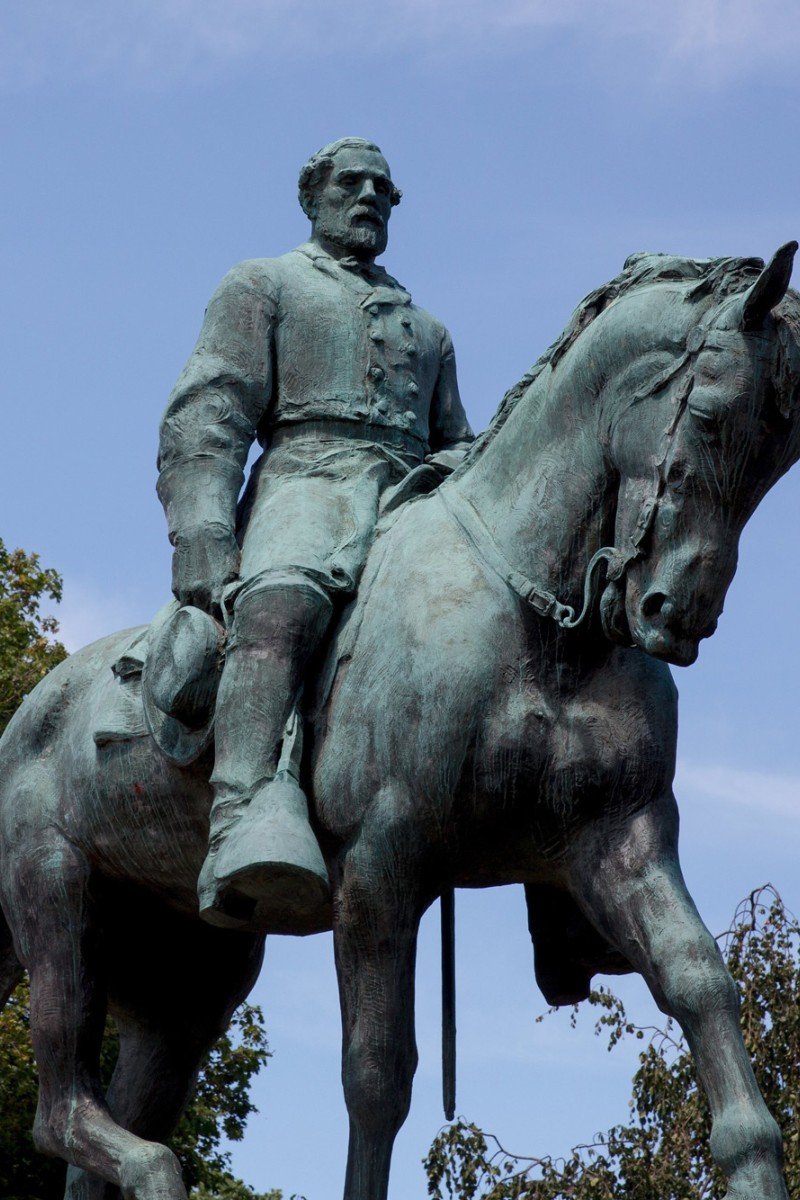 The Robert E Lee statue for which the 'Unite the Right' rally was organized to protest its removal in Charlottesville, Virginia, US.
The Robert E Lee statue for which the 'Unite the Right' rally was organized to protest its removal in Charlottesville, Virginia, US.Confederate Army General Robert E. Lee was hated during the American civil war only to become a heroic symbol of the South’s “Lost Cause” - and eventually a racist icon.
His transformation, at the centre of the recent violence in Charlottesville, Virginia, reflects the changing moods in the United States around race, mythology and national reconciliation, historians say.
Lee monuments, memorials and schools in his name erected at the turn of the 20th Century are now facing scrutiny amid a demographically changing nation.
But who was Robert E. Lee beyond the myth? Why are there memorials in his honour in the first place?
The soldier
A son of American Revolutionary War hero Henry “Light-Horse Harry” Lee, Robert E. Lee graduated second in his class at the famous US military academy West Point and proved himself in battle during the US-Mexico War. As tensions heated around the southern states wanting to break away from the US, Lee’s former mentor, General Winfield Scott, offered him a post to lead the Union’s forces against the South. Lee said no, because he did not want to fight against his home state of Virginia.
Lee accepted a leadership role in the Confederate forces although he had little experience leading troops. He struggled but eventually became a general in the Confederate Army, winning battles largely because Union General George McClellan was really bad at his job. Lee would win other important battles against other Union’s generals, but his agressive tactics were often criticised because a lot of men died under his command. He was famously defeated at Gettysburg by Union Major General George Meade. Historians say Lee’s massed infantry attack across a wide plain was a bad mistake in the era of guns and cannon.
A few weeks after becoming the general-in-chief of the armies of the Confederate states, Lee surrendered to Union General Ulysses S. Grant at Appomattox Court House in Virginia on April 9, 1865.
The slave owner
A career army officer, Lee didn’t have much money, but he inherited a few slaves from his mother. Still, Lee married into one of the wealthiest slave-holding families in Virginia - the Custis family of Arlington and descendants of Martha Washington. When Lee’s father-in-law died, he took leave from the US Army to run the struggling estate and was met by angry slaves expecting to be freed.
Documents show Lee was a cruel man with his slaves and encouraged his overseers to severely beat those who tried to escape. One slave said Lee was one of the meanest men she had ever met.
In a 1856 letter, Lee wrote that slavery is “a moral & political evil.” But Lee also wrote in the same letter that God would be the one responsible for emancipation and blacks were better off in the US than Africa.
The lost cause icon
After the civil war, Lee didn't want people to build Confederate monuments in his honour. Instead he said he wanted the nation to move on from the civil war.
After his death, Southerners adopted “The Lost Cause” story about the Civil War and placed Lee as its central figure. The Lost Cause argued the South knew it was fighting a losing war and decided to fight it anyway on principle. It also tried to argue that the war was not about slavery but high constitutional ideals.
As The Lost Cause narrative grew in popularity, supporters wanted to memorialise Lee, even though he had said he didn't want any monuments. Lee monuments went up in the 1920s just as the violent white extremist organisation, the Ku Klux Klan was experiencing a resurgence and new laws to keep white and coloured people separate, known as the Jim Crow laws were adopted.
The Robert E. Lee statue in Charlottesville, Virginia, went up in 1924. A year later, the US Congress voted to use government funds to restore the Lee mansion in the Arlington National Cemetery.
The US Mint issued a coin in his honour, and Lee has been on five postage stamps. No other Union figure besides President Abraham Lincoln has similar honours.
A new memory
A generation after the civil rights movement, black and Latino residents began pressuring elected officials to take down Lee and other Confederate memorials in places like New Orleans, Houston and South Carolina. The removals partly were based on violent acts committed by white supremacists using Confederate imagery, and historians questioning the legitimacy of The Lost Cause.
A Robert E. Lee statue was removed from Lee Circle in New Orleans as the last of four monuments to Confederate-era figures to be removed under a 2015 City Council vote.
The Houston Independent School District also voted in 2016 to rename Robert E. Lee High School, a school with a large Latino population, as Margaret Long Wisdom High School.
Earlier this year, the Charlottesville, Virginia, City Council voted to remove its Lee statue from a city park, sparking a lawsuit from opponents of the move. The debate also drew opposition from white supremacists and neo-Nazis who revered Lee and the Confederacy. The opposition resulted in rallies to defend Lee statues on the weekend of August 12 that resulted in at least three deaths.
